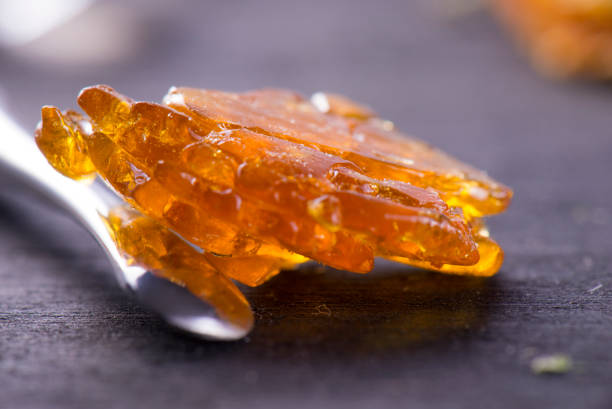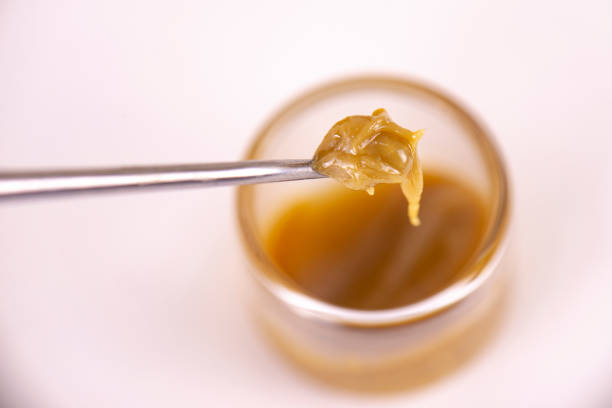Concentrated Choices: Understanding The Variety Of Effects Among Weed Concentrates
The use of cannabis concentrates has become increasingly popular in recent years, with a growing number of consumers seeking out these highly potent products. Concentrates are made by extracting the active compounds from the cannabis plant, resulting in a product that is much more potent than traditional flower. However, with this increased potency comes a greater risk for adverse effects and potential harm.
Understanding the variety of effects among weed concentrates is crucial for both consumers and healthcare professionals alike. This article will explore the different types of concentrates available, their potency levels, methods of consumption, as well as the risks and benefits associated with their use. By providing an objective overview of this topic, readers will be better equipped to make informed decisions about safe and responsible consumption practices.
Types of Concentrates
The classification of cannabis concentrates is a complex and multifaceted topic that requires an in-depth understanding of the different extraction methods, chemical compositions, and physical properties. Concentrates are produced by extracting the essential oils or cannabinoids from the cannabis plant, resulting in a highly potent substance that can be consumed through various methods such as vaporization, dabbing, or ingestion. There are numerous types of concentrates available on the market today, each with its unique properties and effects.
One of the most common types of cannabis concentrate is hashish, which is made by separating trichomes from the plant material using screens or sieves. Another popular form of concentrate is wax or shatter, which is created through butane hash oil (BHO) extraction. Other types include budder, crumble, rosin, live resin, distillate and more. Each type differs in texture and consistency based on their extraction process and chemical composition. Understanding these differences can help consumers choose a concentrate that best suits their preferences and needs.

Potency Levels
Analyzing the levels of potency in different types of cannabis concentrates can provide valuable insights into their chemical composition and potential effects on consumers. Concentrates vary greatly in their potency levels, with some containing up to 90% THC (tetrahydrocannabinol), the primary psychoactive compound in cannabis. The high concentration of THC makes these concentrates extremely potent and should be used with caution by consumers, especially those who are new to using cannabis or have a low tolerance level.
The potency levels of concentrates are influenced by various factors such as the strain of cannabis used, the extraction method employed, and post-extraction processing techniques. For instance, concentrates made from indica strains tend to have higher CBD (cannabidiol) content than those made from sativa strains which typically contain more THC. Additionally, solvent-based extraction methods like butane hash oil (BHO) often yield higher THC content compared to solventless methods like rosin. It is crucial for users to understand how different factors affect the potency levels of concentrates before consuming them as this knowledge can help prevent overconsumption and adverse effects such as anxiety and paranoia.
Methods of Consumption
Exploring the diverse methods of consumption for cannabis concentrates provides an opportunity to gain insights into how these products can be ingested and utilized by consumers. Cannabis concentrates come in a variety of forms, such as shatter, wax, oil, or crumble. The most common methods of consumption include vaporizing, dabbing, or adding them to food and drinks.
Vaporizing is a popular method that involves heating the concentrate until it turns into vapor and then inhaling it through a device like a vape pen or e-cigarette. This method allows users to avoid the harmful effects of smoking while still experiencing the full range of effects from the concentrate. Dabbing is another popular method where users heat up a small amount of concentrate on a hot surface and inhale the resulting vapor through a water pipe or rig. Finally, some consumers choose to add their concentrates to food or drinks which can provide longer-lasting effects but may take longer to kick in due to digestion time. Understanding these different methods allows consumers to make informed choices about their preferred mode of ingestion based on their personal preferences and desired outcomes.
Risks and Benefits
Examining the potential risks and benefits associated with the consumption of cannabis concentrates is a crucial step in comprehending their impact on individual health and well-being. One significant benefit of using cannabis concentrates is their potency, which allows users to experience quick and intense effects. Concentrates are also more discreet than traditional smoking methods, as they produce less odor and can be consumed without the need for rolling papers or pipes.
However, consuming cannabis concentrates also carries several potential risks. For one, because these products are so potent, it's easier to consume too much THC at once and experience adverse effects like anxiety, paranoia, or panic attacks. Additionally, some methods of extraction used to create concentrates may leave behind harmful chemicals or solvents that could cause respiratory issues when inhaled. It's essential for consumers to research the specific concentrate they're considering using and ensure that it has been produced safely before use.

Safe and Responsible Consumption
Safe and responsible consumption of weed concentrates entails various considerations such as quality control, dosage, legal implications, and seeking professional advice. Quality control is crucial in ensuring that the product is free from contaminants and meets the safety standards. Knowing the appropriate dosage is also essential to avoid adverse effects or overdose. Legal considerations must also be taken into account as consuming marijuana products may have certain restrictions depending on the jurisdiction. Seeking professional advice can provide valuable insights and guidance in making informed decisions related to safe and responsible consumption of weed concentrates.
Quality Control
The implementation of rigorous quality control measures is essential to ensure the safety and efficacy of cannabis concentrates. Concentrates are highly potent forms of cannabis that can be made using a variety of extraction methods, such as butane hash oil (BHO), CO2 extraction, or rosin pressing. These methods can vary widely in terms of their efficiency, yield, and potential for residual contaminants. For example, BHO extraction has been associated with a higher risk of explosion due to the use of flammable chemicals, while CO2 extraction may produce fewer impurities but requires expensive equipment. Therefore, it is important for producers to carefully monitor their processes and conduct regular testing to identify any potential hazards or issues.
In addition to ensuring product safety, quality control measures can also help maintain consistent potency and flavor profiles across different batches. This involves monitoring factors such as temperature, pressure, and solvent ratios during the extraction process to optimize yields and minimize variability. Testing for cannabinoid content (such as THC or CBD) and terpene profiles can also help producers identify specific strains or blends that work best for different types of users or applications. Overall, implementing robust quality control standards can help ensure that consumers have access to safe and reliable cannabis concentrates that meet their needs without sacrificing quality or purity.
Dosage
Accurately dosing cannabis products, including concentrates, is essential for ensuring safe and effective use by consumers. Concentrates are highly potent forms of cannabis that can contain THC levels upwards of 90%. These high levels make it crucial to accurately measure the amount consumed to avoid unwanted side effects such as anxiety, paranoia, or even psychosis.
Dosage guidelines for concentrates vary depending on the product and method of consumption. For example, a dabbing rig may require less concentrate than a vaporizer pen due to differences in heating and delivery methods. Additionally, individual tolerance levels and experience with using concentrates also play a role in determining appropriate dosage amounts. It is recommended that novice users start with smaller doses and gradually increase as they become more comfortable with the effects. Overall, understanding proper dosage when using weed concentrates is vital for achieving desired results while avoiding any adverse reactions.
Legal Considerations
Legal considerations play a significant role in the use and distribution of cannabis products, highlighting the need for individuals to educate themselves on laws and regulations surrounding their consumption. Marijuana is still illegal at the federal level in the United States, despite several states legalizing its medicinal and/or recreational use. This has resulted in a complex web of laws that can vary widely from state to state, affecting everything from how much an individual can possess or grow to where they can purchase it.
Additionally, while marijuana may be legal under certain circumstances, concentrates may not fall under those same regulations. For example, some states only allow marijuana flower to be sold at dispensaries but prohibit other forms such as edibles or concentrates. It is important for individuals to research laws specific to their state and the type of concentrate they are interested in using before making any purchases or consuming any products. Failure to do so could result in legal consequences.
Seeking Professional Advice
It is crucial for individuals to seek professional advice from knowledgeable and licensed healthcare providers before consuming cannabis products, as this can help ensure safe use and mitigate potential risks associated with the drug. This is particularly important when it comes to weed concentrates, which are highly potent and can have stronger effects than traditional forms of cannabis. Healthcare providers can provide guidance on appropriate dosages, consumption methods, and potential interactions with other medications or health conditions.
In addition to seeking advice from healthcare professionals, individuals should also do their own research on different types of concentrates and their specific effects. This includes understanding the differences between THC (the psychoactive compound in cannabis) and CBD (a non-psychoactive compound). It is also important to be aware of any additives or contaminants that may be present in certain concentrates. By being informed about the variety of effects among weed concentrates, individuals can make more informed decisions about their use and reduce the risk of negative consequences.
Conclusion
In conclusion, the world of weed concentrates offers a wide range of options when it comes to types, potency levels, and methods of consumption. It is important for consumers to understand the risks and benefits associated with these products and approach their use in a safe and responsible manner. While concentrates can offer strong effects and potential medicinal benefits, they also come with potential negative consequences if not consumed properly.
It is crucial for individuals to educate themselves on the different types of concentrates available and choose products that align with their personal preferences and needs. Additionally, it is important to be mindful of dosage and start small before increasing intake. By being informed about the variety of effects among weed concentrates, consumers can make informed decisions regarding their use while minimizing potential risks.
If you're looking for more ideas about this topic, feel free to read this blog post from Local Product of Colorado.

